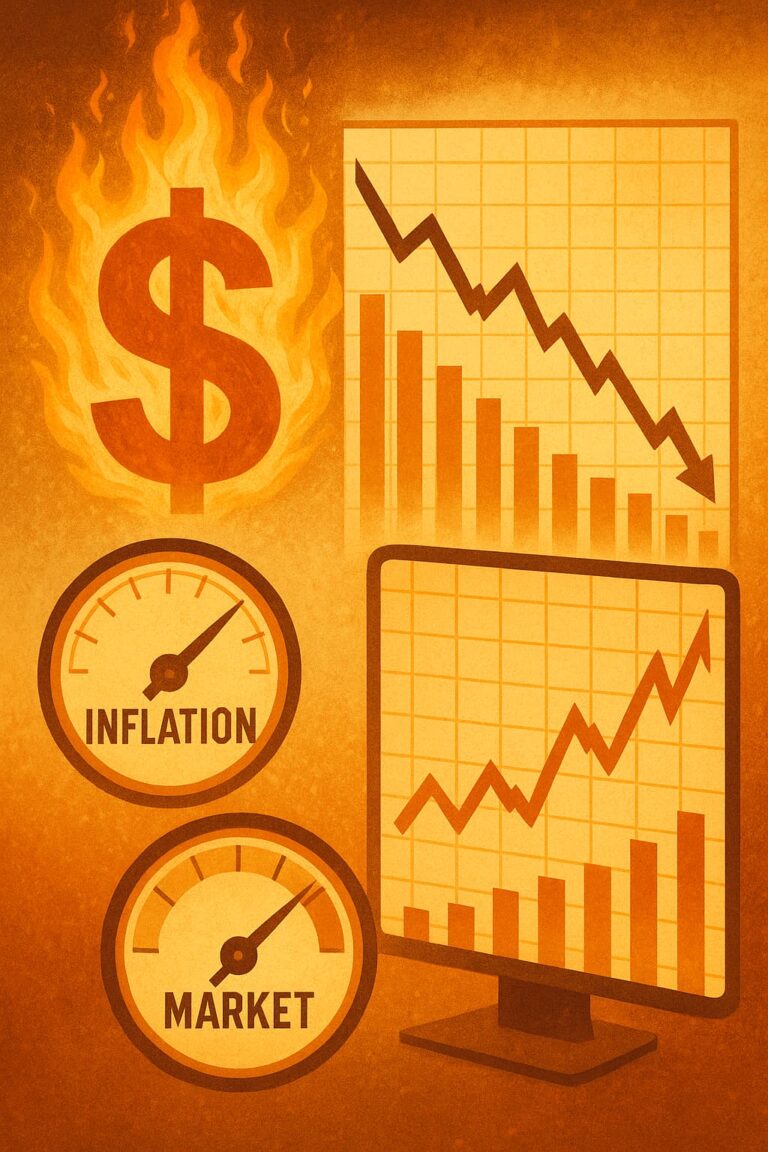Every Fed decision sends shockwaves through markets.
Whether it’s a hike or a cut, treasury yields move. Equities react. Investor sentiment shifts instantly.
In 2025, with inflation stabilizing and growth uneven, Fed moves are more powerful than ever.
Wondering what that means for your bonds or stocks? Read on to decode every move and its impact.
How Fed Hikes Influence Treasury Yields
When the Federal Reserve raises rates, it pushes up the cost of borrowing. That impacts everything—from short-term bills to long-dated treasuries.
Bond yields generally rise in anticipation, but the yield curve may flatten or invert depending on economic outlook.
4 Key Reactions to Fed Hikes
- Short-term yields rise fast as money market rates jump
- Long-term yields rise slower, reflecting growth fears
- Bond prices fall as yields increase
- Curve flattening or inversion can signal a coming recession
Recent 2025 Example
In March 2025, the Fed raised rates by 25 bps. The 2-year yield rose to 4.85%, while the 10-year barely moved. Markets interpreted the move as the last hike before a potential pause.
Yields moved, but equities were mixed—growth sectors fell while banks rallied.
How Fed Cuts Shift Bond Markets
Rate cuts usually mean the Fed is trying to stimulate growth or ease financial conditions.
Treasuries respond immediately. Prices surge and yields fall. But investor expectations matter—sometimes cuts spook markets more than support them.
4 Impacts of a Fed Cut
- Short-term yields drop sharply, affecting bank and savings rates
- Long-end yields may drop—or rise if inflation fears persist
- Bond ETFs like TLT and IEF rally
- Yield curves steepen if cuts are seen as pro-growth
Case Study: Fed Cut in Late 2024
In December 2024, a surprise 50 bps cut pushed the 2-year yield down 40 basis points overnight. Treasury ETFs rallied 2–3%, and mortgage rates eased.
However, tech stocks also corrected, as investors feared the cut meant deeper growth issues.
Fed Moves and Their Equity Market Impact
The relationship between Fed actions and stocks isn’t always direct. It depends on timing, macro data, and investor mood.
A hike might hurt growth stocks but boost banks. A cut might lift bonds and dividend stocks—or crash sentiment if tied to recession fears.
4 Equity Themes from Fed Moves
- Higher rates hurt growth and tech stocks
- Value stocks benefit from higher rates due to stronger earnings sensitivity
- Rate cuts support real estate and utilities
- Financials react strongly to changes in rate outlook
Equity Example: Q2 2025
As the Fed hinted at a pause, the S&P 500 gained 3%. Tech rebounded. REITs surged on falling bond yields. But small caps underperformed due to credit concerns.
Every Fed word matters—and investors shift portfolios instantly.
Understanding Forward Guidance
It’s not just what the Fed does—it’s what it says.
Forward guidance moves markets even before policy changes. In 2025, Fed Chair pressers often cause more volatility than the actual rate decision.
4 Things to Watch in Fed Statements
- Language on inflation trends (“modest” vs. “persistent”)
- Economic projections and dot plot shifts
- Tone on employment strength
- Timing hints for next action (pause, pivot, etc.)
One word can change equity sentiment—and treasury direction.
How to Position Your Portfolio Around Fed Moves
Active investors know Fed decisions shape everything—so portfolios must adapt.
Bonds, stocks, commodities, and even real estate react differently to hikes vs. cuts.
4 Positioning Tactics
- Use bond laddering to manage interest rate risk
- Rotate into value during hikes, growth during cuts
- Diversify with international assets less tied to Fed
- Watch cash levels—rates affect savings returns too
Don’t guess the Fed—build flexibility into your strategy.





